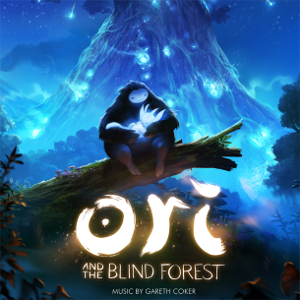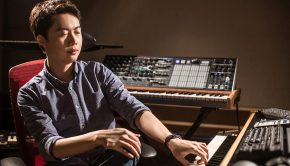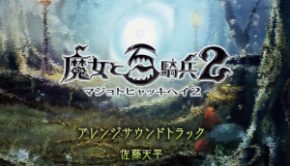Ori and the Blind Forest Original Soundtrack
 |
Album Title: Ori and the Blind Forest Original Soundtrack |
| Record Label: Microsoft Studios Music |
|
| Catalog No.: N/A |
|
| Release Date: March 10, 2015 |
|
| Purchase: Download on iTunes |
Overview
Ori and the Blind Forest, recently released by Moon Studios, has generated a lot of positive feedback, from the artwork that went into the game to the depth of emotion lacing the story. The game revolves around its protagonist, a tree spirit named Ori, who must bring life back to the dying forest of Nibel, guided by different spiritual figures on his path. Gareth Coker’s original soundtrack to the game has been met with just as much praise and success, and rightfully so. Though the game may seem like a small one, the album for the original soundtrack is packed with 32 tracks full of rich and varied musical content that both enhances the in-game experience and serves as a delightful listen outside the game.
Body
Perhaps the best aspect of the soundtrack is the memorable, captivating theme that permeates the album. Unfortunately, the first realization of the theme is in the music featured in the main menu of the game, which isn’t on the album at all. The pieces on the album are in chronological order of the game, which would have put the main menu music first on the tracklist. Interestingly, without the opening music, the theme does not really get featured again until the ninth track on the album, “The Spirit Tree,” in which it blossoms in full force. Opening with an ethereal mix of bells and vocals, the melody is soon introduced by solo vocalist Aeralie Brighton, alongside piano and strings. The theme repeats itself once, in a question-and-answer pattern, and then fades away into the following track, “Kuro’s Rage,” in which it returns through a delicate, high-pitched oboe before descending into a more traditional orchestral setting. After that point, the theme shows up on most of the tracks in some shape or form.
The Spirit Tree theme’s straightforward nature lends itself well to the different realizations featured all over the album. “Restoring the Light, Facing the Dark” is one of the most active settings, with a pulsing rhythm through percussion and low brass. The melody shows up in piano and strings (soli and solo), but upon repetition, the strings leap up and begin descending in a pattern from “Ah! Vous dirai-je, Maman” — but it works. The piece is exhilarating and liberating, and the inclusion of such a simple and familiar melody line contributes to the game’s sense of wonder — Ori is, after all, not unlike a child in his journey through the game, exploring a world both scary and unknown to him, and following directives from trusted parental figures as he travels. “Completing the Circle” is a true variation of the theme, breaking the (at this point) familiar tune up into unfamiliar rhythms, and following different notes of the same chords to give a new life.
Not every track features the same theme. “First Steps into Sunken Glade” has a beautiful oboe melody, and a unique one in the album. The melody is haunting and mournful, and is both introduced and accompanied by wistful scalar patterns in the piano. The melody is later echoed by a cello alongside the cello, and as the oboe reunites them in a third realization of the melody, the piano breaks up the chords into eighth and sixteenth notes, in a minimalist style reminiscent of Yann Tiersen. The listener is met with a refreshing burst of percussion in the following track, “Finding Sein,” which begins on a similar note as “First Steps,” but is soon broken up by a heavily accented rhythm that gives the score new breath and life (along with a mild iteration of the Spirit Tree theme).
Gareth Coker gives life to each area of the game through judicious use of instrumentation, with a attention to in-game detail and settings that guides his musical choices, in a similar practice to that of Howard Shore. For example, “Climbing the Ginso Tree,” which plays while Ori climbs up inside the trunk of a massive baobab-like tree, features a hollow wooden percussion sound and a rapidly ascending note pattern to emulate both Ori’s journey as well as the wooden nature of the tree itself. “Riding the Wind” uses an assortment of airy pipes to emulate the windy feel of a journey through the skies, sharply contrasting the percussion and bells of “Home of the Gumon,” which takes place in the icy and mechanical Forlorn Ruins, and features all of its solemn rhythm alongside an eerie and melancholy harmonic minor scale. “Racing the Lava” is a crazy, frenetic piece on chromatic strings rising up almost atonally. In just under 30 seconds, Coker breaks the mood of the soundtrack up until now, breaking away from any sense of wonder, awe, or power, and giving in to sheer panic.
I was particularly excited to hear the piano on this album, which is, in my opinion, an underused soundtrack instrument. Its piercing clarity brings an extra dimension to the soundtrack, playing a major role in keeping it from being a straight-up orchestra-and-vocals score. “Up the Spirit Cavern Walls” was one piece that used the piano very cleverly, only featuring it in earnest after a light and playful melody from pizzicato strings and oboe – about halfway into the piece, the piano suddenly makes a major appearance alongside a flute, both simultaneously playing exactly the same melody line for a unique textural effect. Particularly in a score that has so much emphasis on a single melody, the piano gives the solo instruments and vocalists a rich support system as well as a distinctive sound.
In addition to the piano, vocalist Aeralie Brighton lends her strong talent to the score — while the first time we hear her is in “Ori Lost in the Storm,” the first track on the album, her clear, soprano voice in that track is hardly representative of her contributions to the album as a whole. She returns again subtly for “The Spirit Tree,” as a kind of subtle melodic accompaniment to the more dominating piano, later rising to sing more of a harmonic role. My favorite track of hers is the final one on the album, “Light of Nibel,” in which her voice takes on a rougher quality, almost tribal, increasing the volume of her voice instead of going into a falsetto on the higher notes. This is the type of liberating vocal techniques that separate the use of instrumentation in this album from those of others — even the same singer drastically changes her style from one track to another and, to great success, adds extra dimensions to what would have been an otherwise straightforward soundtrack.
Summary
Overall, this soundtrack is varied, drawing on several different sources of inspiration, and thoughtful in its use of melodic and instrumental motifs. I find that soundtracks for artistic indie games like this can often lean towards the atmospheric or ambient, and I’m glad this one did not — in enriching this score with such a straightforward and malleable melody, Coker give Ori more of an identity than it would have otherwise. I would like to see some more of the game’s music released at some point, and I have wondered if the incorporation a second major theme might have enhanced the soundtrack even more, but on another level I think the more melodically straightforward approach taken was the right choice, particularly considering the diversity of instrumentation and musical styles which spread the theme across the game extraordinarily well. I can’t emphasize enough how glad I was to hear such thoughtful steps being taken to create instrumental settings for the different locations of the game. I don’t think quite enough composers recognize how crucial the soundtrack can be in creating a setting; Coker delivers. Because of its complex and thoughtful nature, as well as its sheer beauty and delightfulness, I would wholeheartedly recommend Ori and the Blind Forest.
Do you agree with the review and score? Let us know in the comments below!
5
Posted on March 17, 2015 by Emily McMillan. Last modified on March 17, 2015.














